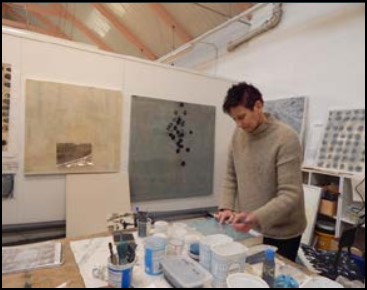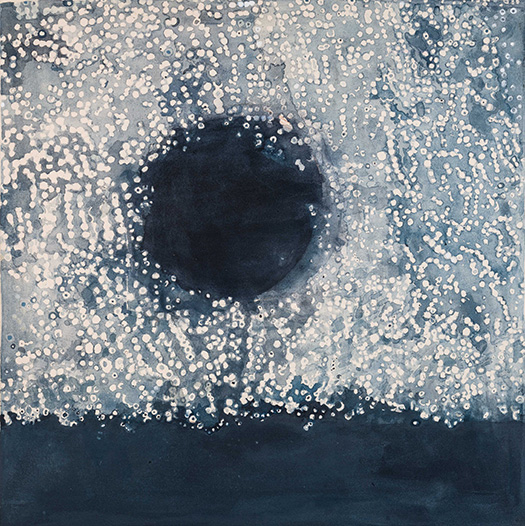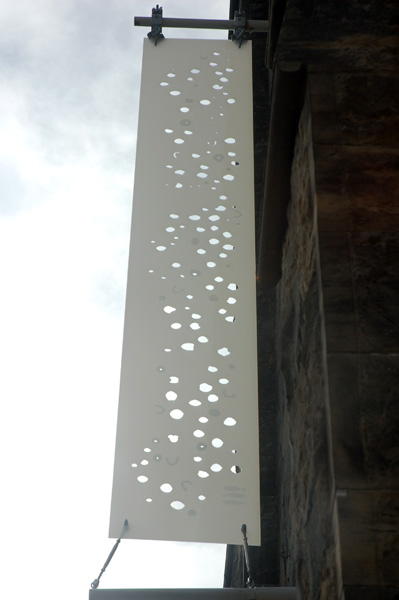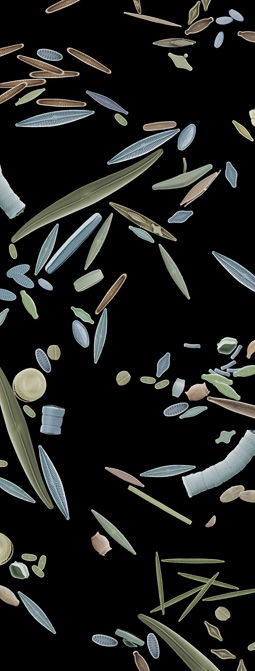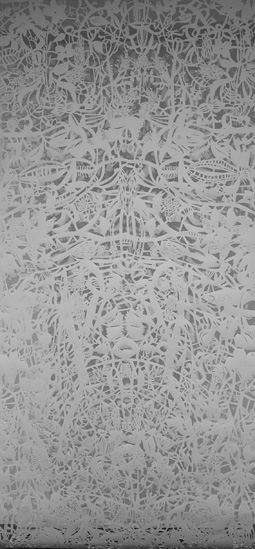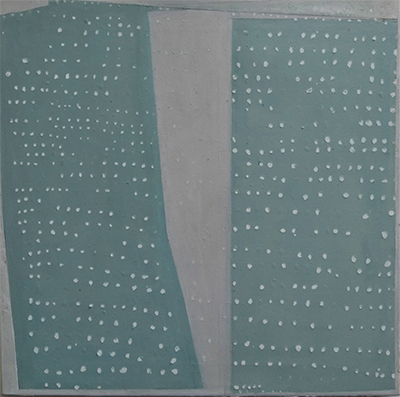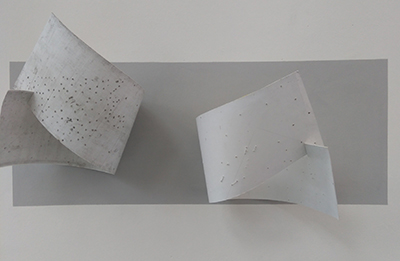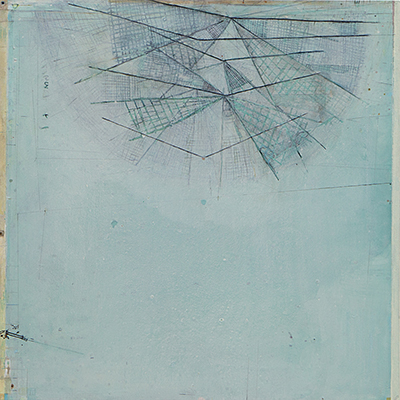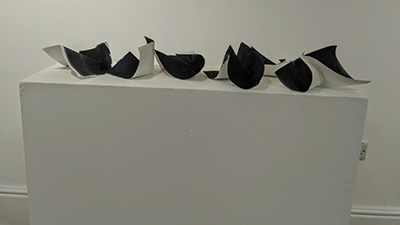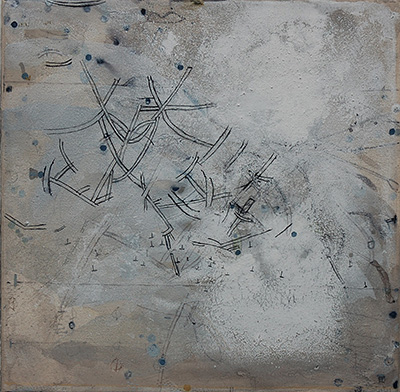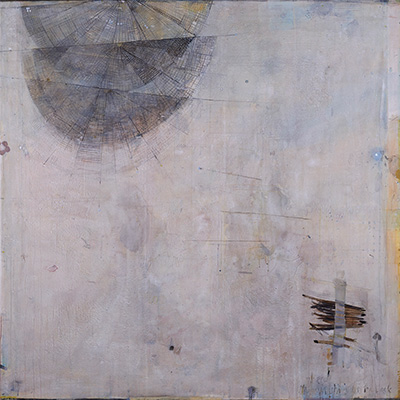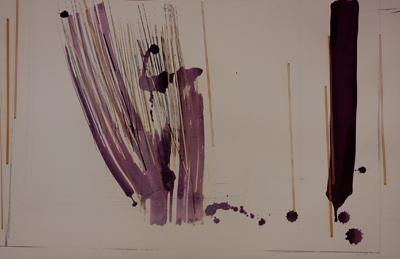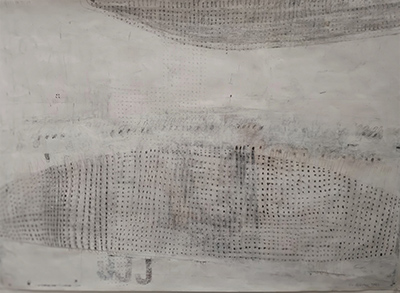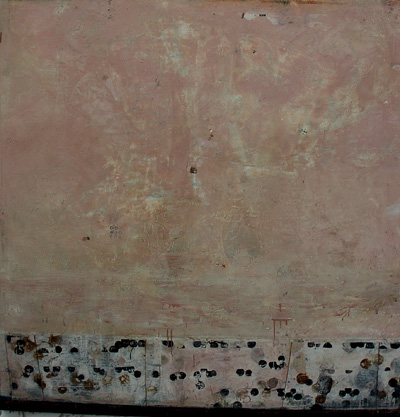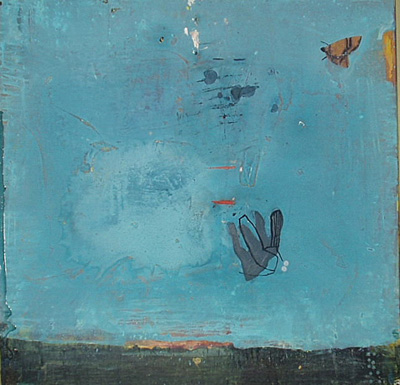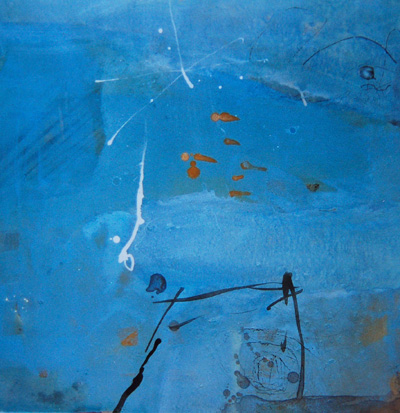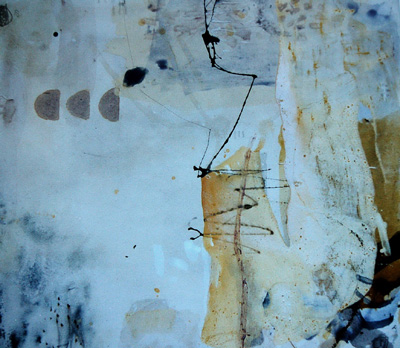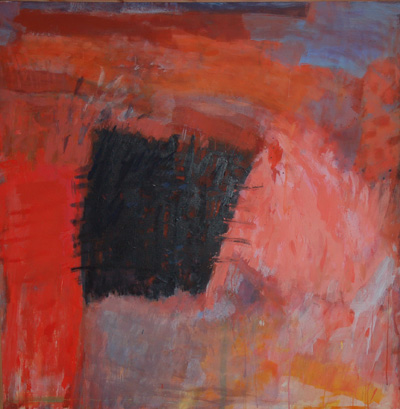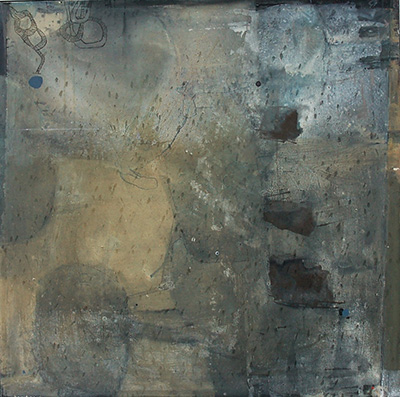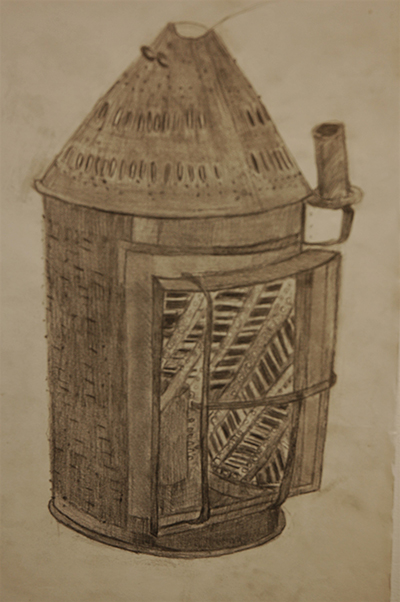Liz Douglas, 1945 - 2022¶
In memoriam
Liz had been fit and healthy and in the midst of a productive flow of work when, in early 2022, she became ill with cancer and died three months later. In Liz's memory, her husband Jim Douglas, with the help of close family and friends, has launched a retrospective exhibition and produced a book whcih you can purchase from this page.
From intimate knowledge of the rural landscape where she grew up, Liz Douglas spent her life closely observing, drawing and painting special places that she loved across Scotland. As she researched the land around her, whether hills, the coast or wetlands, from broad vistas to the microscopic, using technology such as aerial photography and optical or scanning electron microscopes, she moved away from representing what she could see to a more sensory approach, creating visual environments using pigment, line, print and contemporary media.
In her own words...
My aim is to create a sense of simplicity in structure, form and colour. I sift and edit from a myriad of visual references that I use freely in the underpainting of a work. It is the visual reimagining of the landscape that I find compelling. A sense of musical notation and poetics in the finished work is something that I aspire to.
Liz Douglas was an artist who lived most of her working life in the Scottish Borders. She was born and brought up in Angus. She studied drawing and painting at Edinburgh College of Art, completing her postgraduate Masters in Fine Art, Painting in 1993.
Her work, which was influenced by specific landscapes, memory, poetry, and music has developed from direct painting of the landscape to a more sensory approach, creating visual environments using pigments, line, print and contemporary media.
Her work reflects her dialogue with the natural world and the element of unpredictability that exists. She also had a wish to explore these contradictions, using the visible and invisible element in the landscape as metaphor.
The research processes she used involved collaborating with scientists and environmentalists which deepened her knowledge of the natural world, and its contradictions. She investigated microscopic elements using a scanning electron microscope to reveal structures and forms from graptolite fossils, alpine plants, tree and plant pollen material.
